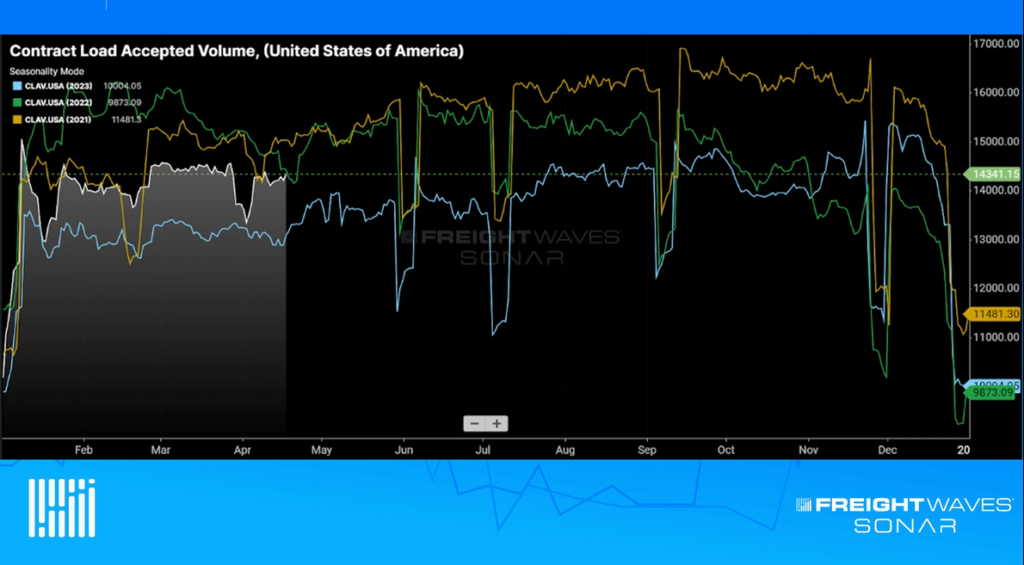There are nuances in the economy that weren’t variables a decade or even a year ago. The landscape is ever-changing despite a few core fundamentals that hold everything together. This holds true for various industries, including freight. Although historical freight market trends give a general direction of what to expect and typical seasonality, it doesn’t deliver the full picture for freight market trends. At best, we can say, “history doesn’t repeat, but it rhymes.”
Spot market
The spot market is volatile, responding quickly to changes in supply and demand. When market abnormalities strike, spot market activity will fluctuate as carriers and shippers change their behavior based on changes in market conditions. Historical freight market data provides insight into how market conditions were influenced by certain historical events, which may contain similarities to current events, but are certainly not a replica. The COVID-19 situation has been compared to 9/11 or to the collapse of the financial institutions in 2008, but those situations have as many differences as similarities. However, historical freight data can provide useful information on previous shifts in supply and demand that help forecast current shifts in spot rates when certain events occur. Each event is different and will affect different market regions in different ways. Historical data should be used as a guide to help you predict the upcoming shifts in the spot market, but it’s not the full story.
Tender rejection rates
Changes in the outbound tender rejection rates in FreightWaves SONAR help users see the trends and the changes at a national, regional, state and/or market level, so users can accurately forecast which direction spot rates are headed using information that has been documented in the past 24 hours. Tender rejection rate data, along with market volumes and tender lead times, can inform users on how much freight is moving, carriers reactions to the current market conditions, and shippers reactions to current market conditions. This information allows shippers, brokers or carriers to optimize decision-making in a particular region or lane. Just as important, FreightWaves SONAR data is broken down, not only by geography, but also by length of haul and equipment type, so market participants can separate data that is relevant to themselves from “background noise.”
Capacity comes and goes
Significant one-time events can lead to a flux of capacity entering the market. This was the case at times during 2017-2018 when tax policy spurred business-business activity and capital expenditures. In addition to increased business investment, tariff uncertainties caused a spike in activity to avoid tariffs, which resulted in a massive pull forward of goods. That event was not permanent, so it cannot be used as an accurate projection of freight market trends going forward. In fact, it is exactly the type of temporary event that makes relying on historical data problematic. Subsequently, much of the capacity that came on-line to deal with the surge of activity was removed from the industry in 2019 as demand declined, resulting in another historical abnormality.
Rhymes but not identical
Once a substantial deviation from the prevailing pattern has been established, historic data loses its significance and real-time data trends become paramount to project where freight demand is going. Beyond general holiday and seasonal variances, each day needs a new game plan. This is similar to football. There are always four quarters and a halftime. However, what happens between those quarters and when timeouts are called will change from game to game. You watch film and prep, but you don’t make the same exact calls from last week (sorry Bengals fans). The best teams adjust on the fly to take advantage of the opportunities presented to them. Stop watching old game film, or in this case, creating a game plan around last year’s freight market trends. You’re operating in a new environment, where freight demand and market dynamics are always changing.











